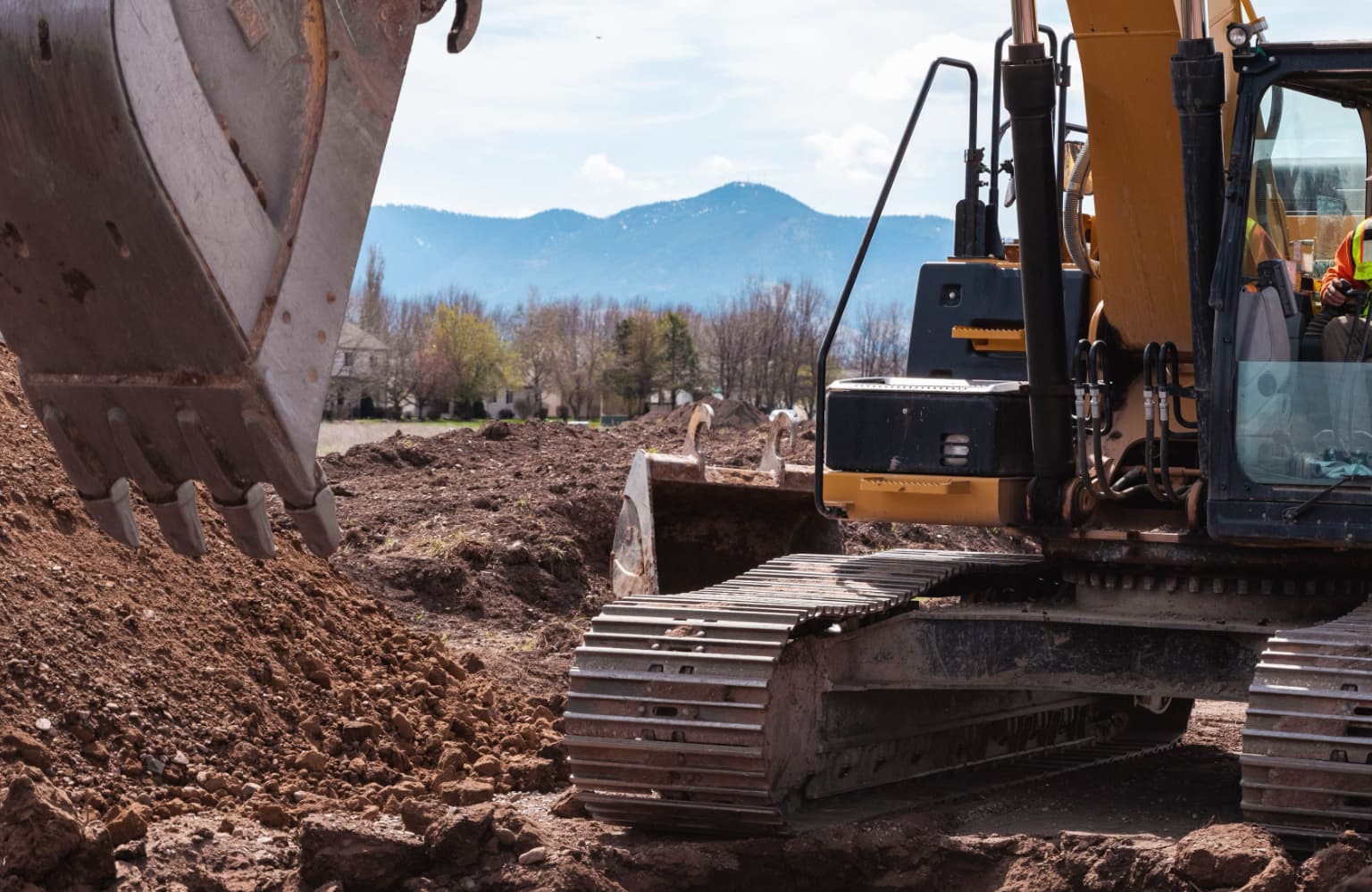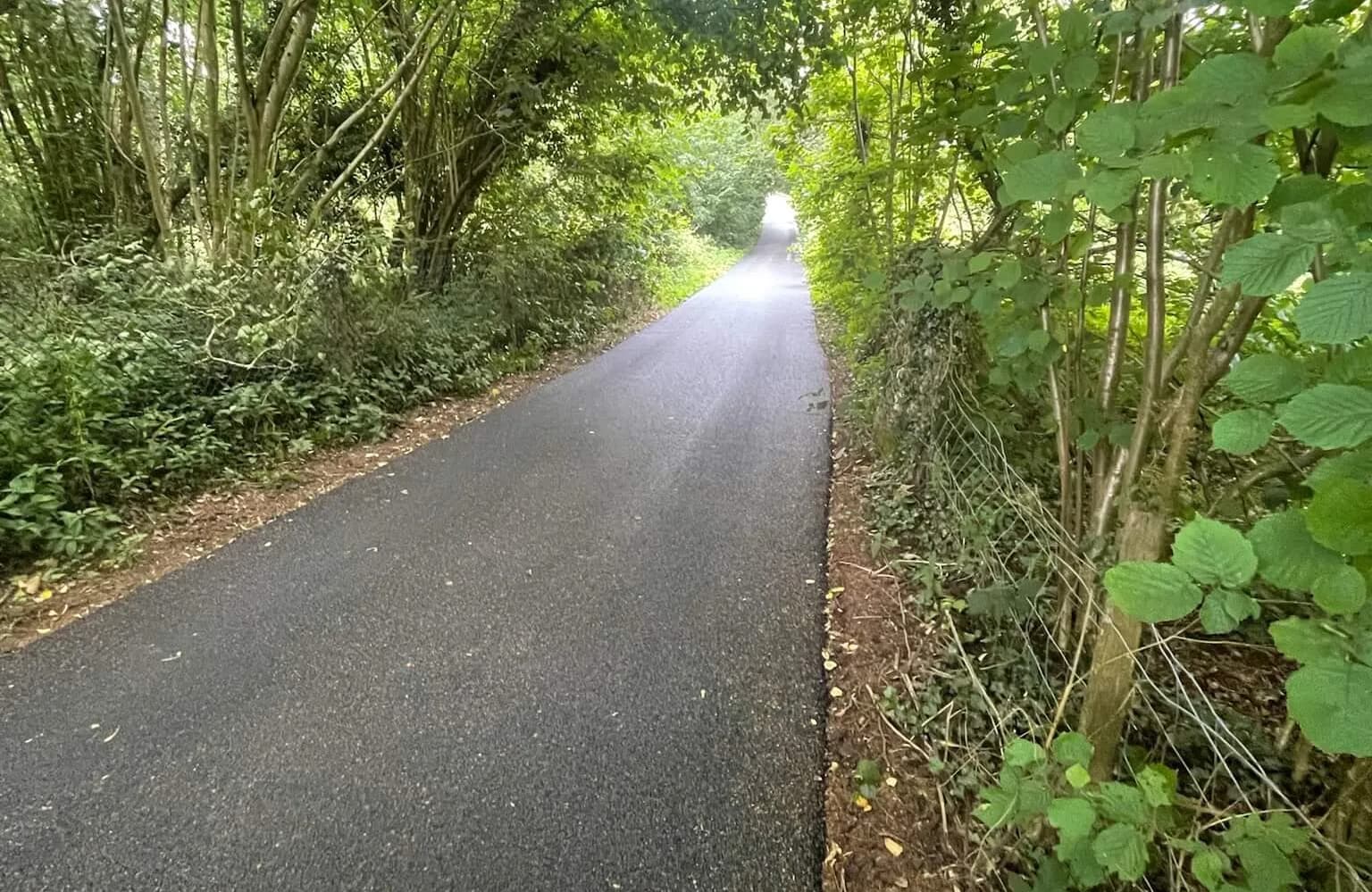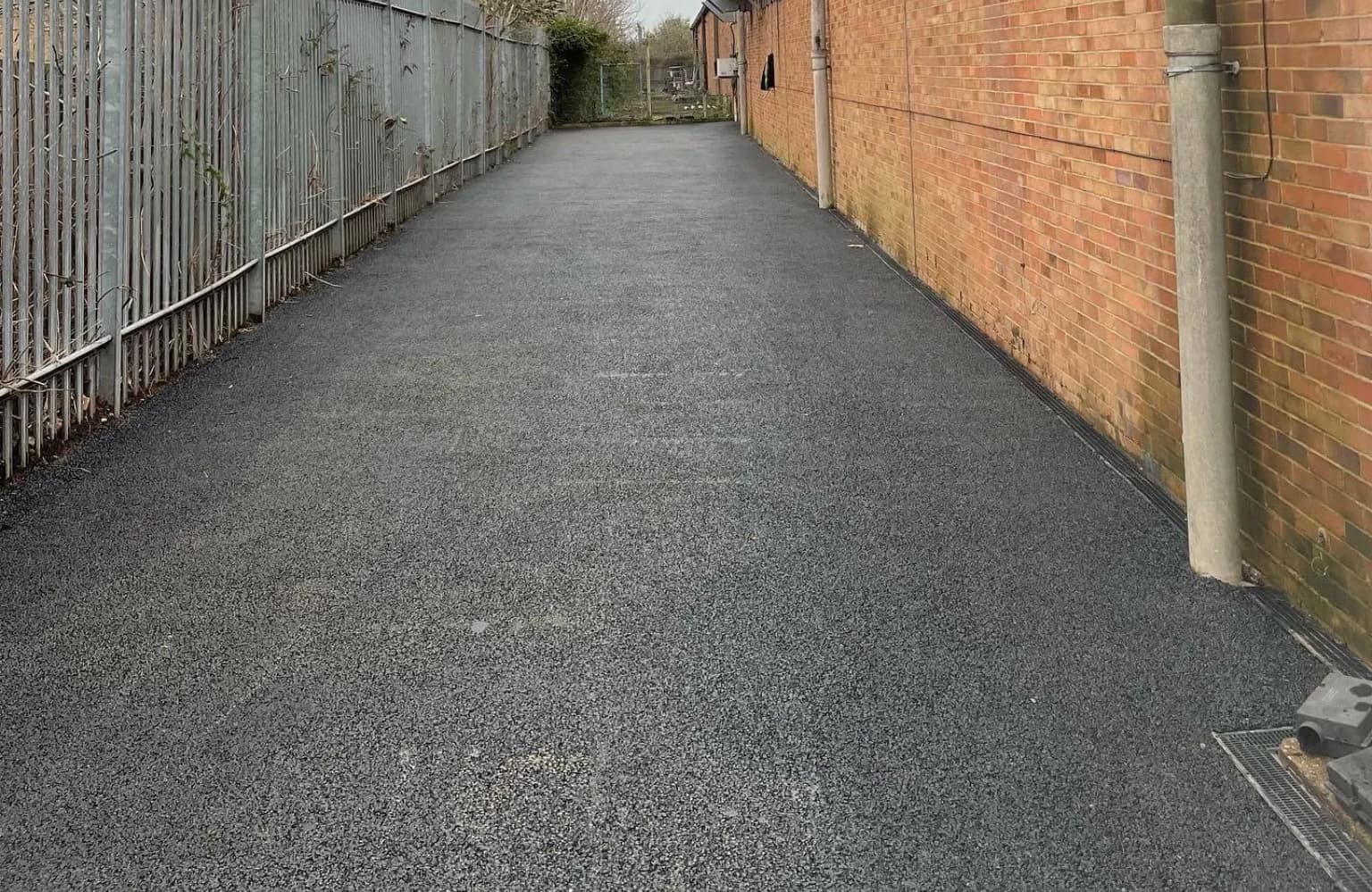The Comprehensive Guide to Road Resurfacing
May 20, 2024 Road Resurfacing, Road Surfacing 9 min read

Ever wondered what happens when roads start to show signs of wear and tear? Road resurfacing is the key to maintaining safe and durable roadways. It involves laying a new layer of asphalt over the existing surface, enhancing safety and extending the lifespan of our roads. In this blog post, we’ll break down everything you need to know about road resurfacing—from the common methods used to what you can expect during the process. If you’re curious about how our infrastructure remains reliable, you’re in the right place. Let’s dive in!
Understanding Road Resurfacing
Road resurfacing plays a vital role in maintaining the safety and functionality of our roadways. This section dives into the definition, importance, benefits, techniques, and materials used in road resurfacing.
Definition and Importance of Road Resurfacing
Road resurfacing refers to the process of renewing the top layer of a road to enhance durability and prolong its lifespan. It is a crucial maintenance activity to prevent potholes, cracks, and other forms of deterioration, ensuring smooth and safe travel for vehicles and pedestrians alike.
Benefits of Road Resurfacing
The benefits of road resurfacing are manifold. It helps improve driving conditions, enhances road safety, and reduces vehicle maintenance costs. By addressing surface defects promptly, road resurfacing also safeguards infrastructure investments and contributes to a more sustainable transportation network.
Common Road Resurfacing Techniques
Various methods are employed in road resurfacing, each tailored to specific needs. Asphalt overlay, microsurfacing, and slurry sealing are among the common techniques used. Asphalt overlay involves laying a new layer of asphalt over existing pavement, while microsurfacing and slurry sealing use thin layers of asphalt and emulsion to restore road surfaces efficiently.
Materials Used in Road Resurfacing
Road resurfacing materials play a crucial role in ensuring the longevity and quality of the renewed road surface. Asphalt, concrete, and aggregate mixtures are commonly used materials. Asphalt offers flexibility and durability, concrete provides strength, and aggregate mixtures enhance stability and skid resistance, all contributing to a well-maintained road network.

Rural Road Resurface
Factors Influencing Road Resurfacing
When it comes to road resurfacing, various factors come into play to determine the necessity and timing of this maintenance activity. Let’s explore two key considerations that heavily influence road resurfacing decisions.
Environmental Considerations
Environmental factors play a crucial role in road resurfacing projects. Extreme weather conditions such as heavy rainfall, snow, and heat can significantly impact the lifespan of roads. Factors like temperature changes and moisture levels can lead to the deterioration of road surfaces over time. Environmental considerations also include the use of environmentally friendly materials and techniques to minimise the ecological footprint of resurfacing projects.
Traffic Volume and Road Condition Impact
The volume of traffic passing through a road and the current condition of the road surface are critical factors in determining when resurfacing is necessary. High traffic volume can accelerate wear and tear on roads, leading to the need for more frequent resurfacing. Additionally, the condition of the road, including cracks, potholes, and uneven surfaces, can impact the safety and usability of the road, prompting timely resurfacing interventions to maintain road quality and safety.
These factors highlight the intricate considerations involved in road resurfacing decisions, emphasising the balance between environmental impact, traffic flow, and road condition preservation.

New Road Resurfacing
The Road Resurfacing Process
Before embarking on a road resurfacing project, a series of crucial steps need to be undertaken to ensure a successful outcome. Let’s delve into the comprehensive process of road resurfacing:
Initial Assessment and Planning
The road resurfacing process typically begins with a thorough assessment of the current road conditions. Engineers and construction experts evaluate the road surface, looking for any signs of damage or wear. This assessment helps in determining the extent of the resurfacing required and the materials needed for the job. Detailed planning comes next, where project timelines, budgets, and logistics are laid out meticulously to streamline the entire process.
Preparation Work Before Resurfacing Begins
Preparation is key to the success of any road resurfacing project. Before the actual resurfacing work commences, extensive preparation work is carried out. This includes cleaning the road surface, repairing potholes and cracks, and ensuring proper drainage to prevent water accumulation. All these preparatory steps are essential to create a smooth and durable base for the new road surface.
Execution of Resurfacing Work
Once the preparation work is complete, the actual resurfacing work begins. The chosen asphalt mix is laid down carefully and compacted to create a uniform surface. Specialised equipment, such as pavers and rollers, are used to ensure the asphalt is applied correctly and evenly. Precision and expertise are key during this phase to guarantee a high-quality finish that meets safety standards and enhances road durability.
Quality Control and Inspection
Quality control plays a vital role throughout the road resurfacing process. Inspectors monitor the work at every stage to ensure compliance with regulations and project specifications. Quality control checks cover aspects such as asphalt thickness, smoothness of the surface, and adherence to design plans. Regular inspections help identify any issues early on, allowing for prompt corrections and adjustments to maintain the overall quality of the resurfacing work.
Costs and Longevity of Road Resurfacing
Road resurfacing is a crucial aspect of maintaining infrastructure, ensuring safe and smooth transportation for all road users. Understanding the costs involved in resurfacing projects and the longevity of the newly resurfaced roads is essential for effective planning and budget allocation.
Factors Affecting Resurfacing Costs
Several factors influence the overall cost of road resurfacing projects, ranging from the condition of the existing road surface to the materials used in the resurfacing process. Here are some key factors that can impact resurfacing costs:
- Size of the Road: The length and width of the road to be resurfaced play a significant role in determining the overall cost of the project. Larger roads require more materials and manpower, thus increasing costs.
- Current Road Condition: The condition of the existing road surface, including cracks, potholes, and wear, can impact the preparatory work needed before resurfacing. Extensive repairs prior to resurfacing can raise costs.
- Type of Asphalt: The quality and type of asphalt selected for resurfacing can affect costs. Higher-grade asphalt mixtures designed for heavy traffic or specific weather conditions may be more expensive.
- Labour and Equipment Costs: The cost of labour, machinery, and equipment required for resurfacing operations is a significant component of the overall project cost.
- Traffic Management: Implementing traffic management plans to ensure the safety of road workers and the public can add to the total cost of a resurfacing project.
Expected Lifespan of Resurfaced Roads
The longevity of resurfaced roads depends on various factors, including the quality of materials used, the traffic volume, and maintenance practices. Here are some key points to consider regarding the expected lifespan of resurfaced roads:
- Quality of Materials: Using high-quality asphalt and materials in the resurfacing process can extend the lifespan of the road. Durable materials resist wear and deterioration over time.
- Traffic Volume: Roads with high traffic volumes experience more wear and tear, leading to a shorter lifespan. Properly designed resurfacing projects can account for heavy traffic areas to enhance durability.
- Climate Conditions: Extreme weather conditions, such as heavy rainfall or snowfall, can impact the longevity of resurfaced roads. Proper drainage and weather-resistant materials help prolong the road surface life.
- Regular Maintenance: Routine maintenance activities, such as crack sealing and pothole repairs, can prevent minor issues from escalating and extend the lifespan of resurfaced roads.

Innovations in Road Resurfacing
Innovations in Road Resurfacing
In the realm of road resurfacing, continuous advancements and innovations are crucial to enhance the durability and sustainability of road infrastructure. This section delves into the latest technologies and sustainable practices making waves in the field, alongside highlighting the ongoing research and development in road resurfacing materials.
New Technologies and Sustainable Practices
Embracing cutting-edge technologies has revolutionised road resurfacing, leading to more efficient and eco-friendly practices. One notable innovation is the use of 3D printing technology to create customised road surfaces that align perfectly with the terrain, reducing material wastage and enhancing longevity. Additionally, the adoption of recycled materials, such as reclaimed asphalt pavement (RAP) and recycled plastics, is gaining momentum for its sustainability benefits.
Incorporating intelligent transportation systems (ITS) into road resurfacing projects is another game-changer. ITS enables real-time monitoring of road conditions, traffic flow optimisation, and predictive maintenance, ensuring smoother and safer journeys for motorists. Furthermore, the integration of solar panels into road surfaces, known as solar roadways, is a sustainable approach to generate renewable energy while providing durable and skid-resistant driving surfaces.
Research and Development in Road Resurfacing Materials
Continuous research and development efforts are focused on exploring innovative materials that enhance the performance and longevity of road surfaces. Advanced nanotechnology is being utilised to develop self-healing materials that can automatically repair cracks and damages, prolonging the lifespan of roads and reducing maintenance costs.
Moreover, the quest for sustainable alternatives has led to the development of bio-based binders derived from plant oils and waste products. These environmentally friendly binders offer improved flexibility, adhesion, and resistance to weathering, ensuring roads withstand various climatic conditions and heavy traffic loads.
By leveraging state-of-the-art materials like graphene-enhanced asphalt and exploring novel sustainable solutions, the road resurfacing industry is paving the way for more resilient, eco-conscious infrastructure that can meet the evolving demands of modern transportation systems.
Contact Us for More Information
When it comes to road resurfacing, it’s essential to have all the necessary information before making decisions. Whether you’re a homeowner looking to improve your driveway or a city planner overseeing a large-scale road project, reaching out for more details can provide valuable insights. Feel free to contact us for any queries or further information you may require about road resurfacing projects.
Get a free quote
Call us on 020 3808 8086 or fill in the short form below.
"*" indicates required fields